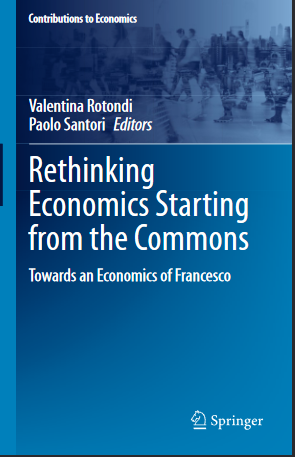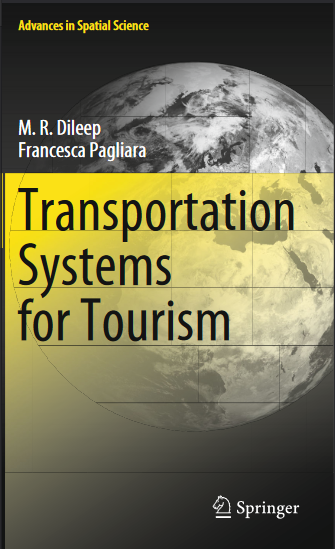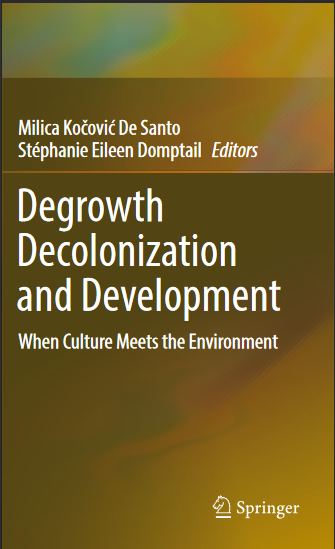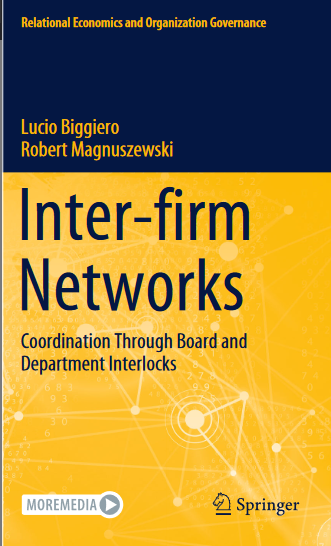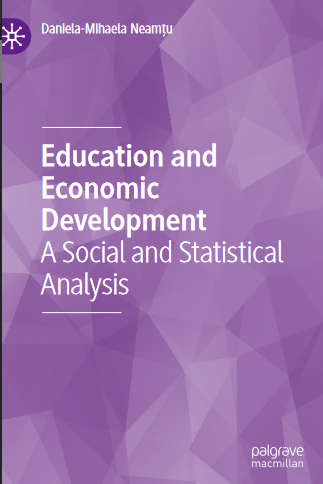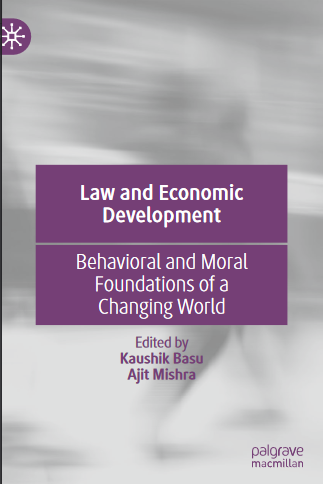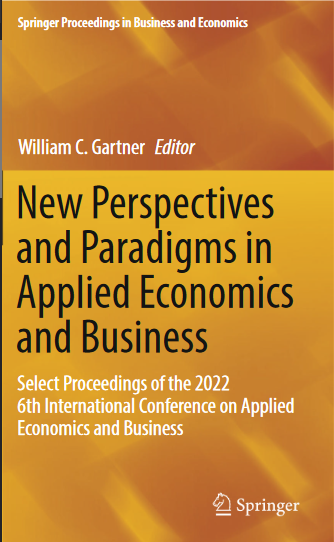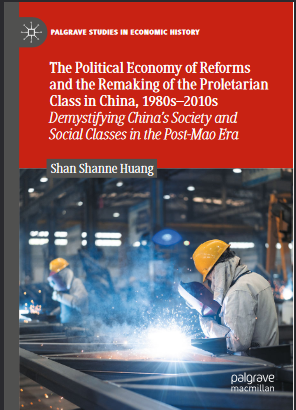موضوعات
آموزش و پرورش
ادبیات و زبان
پزشکی، دندانپزشکی و داروسازی
تاریخ و جغرافیا
داستان و رمان
دیگر
دین و فلسفه
روانشناسی
ریاضیات و آمار
سلامتی، تناسب اندام و رژیم غذایی
شیمی و پلیمر
علوم اجتماعی و حقوق
علوم زیستی و بیوتکنولوژی
فیزیک و نجوم
کامپیوتر و اینترنت
کتابهای کودکان و داستان
کسب و کار و اقتصاد
کشاورزی و دامپزشکی و غذا
معماری
مهندسی و فناوری
هنر و تئاتر
محصولات
Rethinking Economics Starting from the Commons Towards an Economics of Francesco - Original PDF
نویسندگان: خلاصه: What would happen if the economics courses taught in universities focused on the topic of the commons rather than of private goods? What if the former became the main subject of study and the latter the exception in the study of economic science? What if social business, rather than being considered a hybrid form, became the typical approach, with ethical and green finance taking over the financial sector? Is it possible to move away from the primacy of consumers to the preeminence of ethical consumers who express their daily preferences for an inclusive, sustainable, and worker-friendly economic system? These and other questions are the basis of this book, which aims to systematize the academic contribution to the development of the Economy of Francesco (henceforth EOF). EOF is a global movement of young (under 35 years) economists, entrepreneurs, and changemakers who, in 2019, answered Pope Francis’ call to gather in Assisi to rethink and change the global economy. The three pillars of the EOF are Pope Francis, with his social and economic magisterium; the Franciscan economic thought of the late Middle Ages, which is a source of precious knowledge with which to imagine a new economy; and the ideas of the young people thinking, working, and living a new economy. EOF is also a forum for youth-driven inclusive dialogue, stimulating a vibrant global change toward a new economic system, one that should serve everyone, regardless of income, gender, race, class, family, or background, and one in which everyone can thrive and feel included. To achieve this goal, EOF has been structured since the very beginning along 12 thematic “villages,” i.e., working sessions rooted in topics critical for today’s economy. Each thematic village contains a tension in its title, representing the already contemporary eco- nomic systems and the not-yet economy for which the movement advocates (i.e., Agriculture and Justice, Work and Care, Co2 of Inequalities, Women for Economy, Policies and Happiness, and many more)Transportation Systems for Tourism - Original PDF
نویسندگان: خلاصه: The term “transportation system” is usually referred to the equipment and logistics of transporting passengers and goods. It covers the trips by all means of transport, from cars and buses to boats, aircraft, and even space travel. The objective of a transportation system is to coordinate the movement of people, goods, and vehicles in order to use routes most efficiently. When implemented, transportation systems seek to reduce transport costs and improve delivery times through effective timetabling and route management. Periodic re-evaluations and the development of alternative routes allow for timely changes to the transportation system to for increasing the efficiency. A standard transportation system will usually feature multiple timetables designed to inform the user of where each vehicle in the fleet is expected to be at any given point in time. These timetables are developed alongside an array of route plans designed to coordinate vehicle movements in a way that prevents bottlenecks in any one location. The main benefit of implementing a transportation system is delivery of goods and users to their destinations in a timely manner. This, in turn, increases the effi- ciency of vehicle use, as the same vehicle can be used for “multi-drop” jobs, such as bus services or home delivery networks, far more effectively when their routes are planned in advance rather than being generated “on the fly”. Transportation systems are developed in a wide variety of sizes. Local transport networks spanning the bus network for a city and its suburbs are common, as are country-wide delivery networks for haulage firms. Airlines use international transportation systems to coordinate their flights. The larger the distance being covered, the more effective the use of vehicles when a transportation system is used.Degrowth Decolonization and Development When Culture Meets the Environment - Original PDF
نویسندگان: خلاصه: Degrowth Decolonization and Development offers a collection of seven original case study analyses, followed by a synopsis of concepts contributing to decol- onize development by shaking the hegemony of the Western paradigm. The partici- pating researchers met when presenting their work in Decolonization and Degrowth panels within two International Degrowth Conferences held in July (organized by Manchester University together with the Ecological Economics conference) and in August 2021 in The Hague, Netherlands. Ranging from cultural studies, critical development studies, cultural policy, cultural political economy, political economy, heterodox economic approaches, eco-feminist political ecology, to anthropology and sociology, the collection of chapters provides a broad interdisciplinary oversight of the contemporary (developmental, environmental, economic, social, cultural) chal- lenges. Precisely this interdisciplinary approach facilitates the understanding of the critical contemporary context with its complex intermingling of (positionality) crises. Our multiple analyses of Western thought, capitalist and patriarchal systems rooted in case studies depict rebellions to this hegemonic system and challenge it from complementary angles, which is the reason why we found the degrowth as most suitable framework to understand the current contemporary context and seek for post-growth alternatives. The first chapter introduces the most important concepts such as: permanent crisis, modernity and colonnialism, with associated dichotomies encaptured in the Western paradigm. We embrace the position that colonialism is not derivative but constitutive of modernity as “there is no modernity without colonial- ism” (Mignolo and Walsh 2018: 4; 107) and modern capitalism, where the cultural potential for radically necessary changes is essential—as a driver of the degrowth forces that reflects the eternal relations between man and naturInter-firm Networks Coordination Through Board and Department Interlocks - Original PDF
نویسندگان: خلاصه: Firms do not interact only through prices, quantity or quality: rather they employ many other ways to coordinate their behavior. However, it is still rather unclear under which circumstances the mix of different ways is built, neither the relative relevance of each of them. What is sure is that one of such ways is through sharing a director between boards of related companies: this is the phenomenon named interlocking directorates or, more recently, board interlock (BINT), known since long, but still deserving a lot of attention. Actually, this is a form of coordination which occurs at a company’s highest level, because boards decide—or at least address to—the strategic behavior. There are indeed many reasons to share a director, reasons that do neither always nor intentionally deal with strategic issues. However, whatever they are, the effects of board interlock always impact, to a more or less extent, the sphere of strategies. Further, and more noteworthy, more or less intentionally and extensively, they imply some form of knowledge creation and sharing, espe- cially under its tacit form. In fact, what should actually be done when one sits in a board and how to perform this is not a task so precisely defined: its concrete execution depends primarily and essentially on the personal characteristics of each involved director and on various organization-specific circumstances. Hence, this is the conceptual perspective applied into this book: Board interlocks are inter-firm coordination forms that channel strategic knowledge, which is a resource particu- larly precious in innovation-based industries, and one becoming progressively more important also in all other industries. Due to these characteristics, the main research streams employed in this work are the four following: board interlocks, knowledge networks, inter-firm networks and Social Network Analysis (hereafter, SNA) as the main methodological approach.Education and Economic Development - Original PDF
نویسندگان: خلاصه: The foundation of present-day society is based on human resources as a key element for growth and based on education for economic and social prosperity. It has become a true fact that current development relies heav- ily on education and culture as a business model, some communities hav- ing their own internalized ways, while other cultures provide for a more open society. Consequently, education in modern society has become a field of study as well as an object of study for teachers, economists, soci- ologists, and many other researchers. The progress of a society, considered from both an economic and a social perspective, is accomplished by acquir- ing knowledge allowing the human potential to be used in the best pos- sible way in various conditions. Education stands for the foundation of a free and open society, the cornerstone of a powerful and sound state. From a professional point of view, education represents the key foundation of human resource develop- ment worldwide. Globally, society itself heads continuously toward a knowledge-based economy, where education and performance are con- stantly judged against performance indexes, as well as a comparison index, among countries. Numbers and narratives lead to the transformation and valorization of strategic resources based on innovation, learning, and changLaw and Economic Development - Original PDF
نویسندگان: خلاصه: CHAPTER 1 Introduction Kaushik Basu and Ajit Mishra In recent decades and especially in the last few years, we have witnessed several dramatic changes in the global economy. The rise of artificial intelligence, digital technology, and mega platforms that collect data and facilitate trade is changing the landscape of economics. Rapid globaliza- tion since the end of World War II, with a pick-up in pace over the last three to four decades, has created new challenges for law and regulation since increasingly contentious conflicts arise, which span multiple coun- tries and legal jurisdictions. With new technology and globalization, the demand for traditional labor has been declining, creating new societal tensions and political polarization. Digital technology is giving rise to massive economies of scalNew Perspectives and Paradigms in Applied Economics and Business - Original PDF
نویسندگان: خلاصه: Preface Due to the global situation regarding the COVID-19 pandemic, the 2022 6th Inter- national Conference on Applied Economics and Business (ICAEB 2022), which was planned to be held in Stockholm, Sweden, during August 24–26, was held as a hybrid conference during the same time period. The decision to hold the conference in hybrid mode was made in compliance with many restrictions and regulations that were imposed by countries around the globe. Such restrictions were made to mini- mize the risk of people contracting or spreading the COVID-19 through physical contactThe Profit Magic of Stock Transaction Timing - Original PDF
نویسندگان: خلاصه: Can a $10,000 investment yield $1,000,000 in a year? In five years? If so, what is the risk involved? These are the kinds of questions to which this work is addressed. Such fantastic results are possible in the stock market. Individual issues fluctuate widely enough and often enough to permit this and more. Techniques are presented here that put an average yield on invested capital of 10% per month, well within the realm of possibility. Compounding profits at this rate, such a yield can return $1,000,000 on a $10,000 investment within 50 months. An actual trading experiment will be described using these principles which produced an 8.9% yield per transaction--every 9.7 days. Such a yield, if continued, compounds $10,000 to $1,000,000 in 15 months. If such results can be attained in the market -- why isn't everyone doing it? The answer is complex, but the elements are simple: effort, knowledge and psychological barriers. Any goal this worthwhile requires time and effort. Most investors, amateur and professional do not have the kind of analytical background needed to shear through rumour, opinion, and adage to get at the basis of why stock prices change. And finally, even with knowledge in hand, many investors lack training in the emotion-logic balance required for success. Nevertheless, all of these obstacles can be overcome. It is the purpose of this book to provide you with the essentials. The results are yours if you care to apply yourself with sufficient intensity. Investment operations will be presented here in a deliberately unorthodox manner. We will turn our backs firmly on all cliches, adages, and market lore that will not withstand critical scrutiny. Where necessary, we will not hesitate to form new ones that do fit the facts. You will find here that the big money in investing stems from the principle of "profit compounding:---of short-term trades. It is further shown that this potential cannot be exploited in an optimum manner without a large improvement in transaction-timing capability that cannot be achieved using traditional investment methods. You will be exposed to: a concept of profit maximization; a model of stock price motion with prediction implications; an explanation of why chart patterns form---and how to use this knowledge to your profit; step-by-step methods for using the price-motion model to generate definite "wait," "buy," "hold," "sell," "sell short," "cover short," and "protect profit" signals; an explanation of why moving averages work and how to design your own for use in transaction timing; a complete trading method: how to select issues, how to analyse them for action signals, and how to improve your chances of turning and keeping a profit; the extent to which you should be concerned by chance factors, whether or not you should sell in case of war or financial crisis; the reasons why psychological considerations can affect your profits and what you can do about it; an introduction to numerical analysis and spectral analysis, upon which the results on the book are based. The problems of trading techniques and methods are dealt with directly. Enough methods and references are included to permit further research if desired.Handbook of Hope Theory, Measures, & Applications - PDF
نویسندگان: خلاصه: This Handbook of Hope simply would not have happened without a small army of graduate students who, over the past decade, have come into my office one by one and suggested yetanother angle from which we could view hope. In that sense, what has come to be called hope theory has been like a gemstone that, when held to the light, sends shimmers of ideas about yet other possible implications or experiments. I have produced previous theories about reactions to personal feedback, uniqueness seeking, excuse making, and reality negotiation, hue none of chose have continued co produce the sufficiently intriguing questions to get me revved up for yet another experiment. Hope theory has been a great energizer at a time in my life when I have needed it. For the past seven years I have had a severe, unrelenting, and undiagnosed chest pain that is with me from my fim waking moments to the time th.at I slip off into sleep. Although I have been taking powerful pain killers, I think that none of those pills matches the positive effects of my getting lost in theory and research and work- ing with my students. At age 55 (by the time this book is published), I still enjoy the theory and bench science to the same degree that I did as a brand new 27-year- old assistant professor here at Kansas. And so, I have much for which to be th:.ink- ful.The Political Economy of Reforms and the Remaking of the Proletarian Class in China, 1980s–2010s - Original PDF
نویسندگان: خلاصه: CHAPTER 1 Introduction On 1 July 2021, Xi Jinping stated in his speech at the conference of cele- bration of the one-hundredth anniversary of the founding of the Chinese Communist Party (CCP) that the Reform and Opening Up and socialist modernisation is one of the greatest achievements of the CCP.1 In the speech, he said the People’s Republic of China (PRC) “achieved the implementation from the highly centralised planned economic system to the dynamic system of a socialist market economy” (shixian le cong gaodu jizhong de jihua jingji tizhi dao chongman huoli de shehui zhuyi shichang jingji tizhi). Raised up in 1978, the Reform and Opening Up (gaige kaifang ) has lasted for 44 years now, as has the state’s reform of the economic system. As Xi mentioned in his speech, due to the reform of the economic system, China has become the second-largest economy in the worldآیا کتاب مورد نظر هنوز بر روی سایت قرار نگرفته است؟ جای نگرانی نیست! کافی است بر روی گزینه سفارش کتاب کلیک کرده و درخواست خود را ثبت کنید. در کمتر از چند ساعت کتاب شما را آماده خواهیم کرد.
